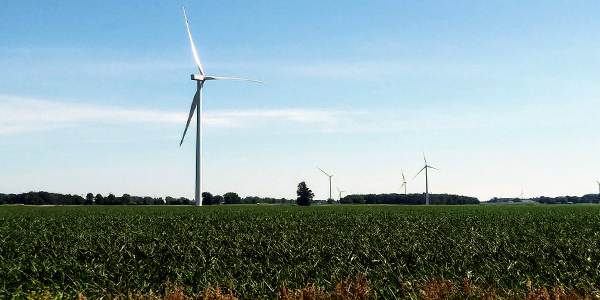A lack of interregional transmission projects is stymying the growth of renewable resources in SPP, MISO and PJM, according to a new report released Thursday by the American Council on Renewable Energy.
The report, compiled by Concentric Energy Advisors, was based on interviews with stakeholders and other key market participants in the RTOs and is meant to identify improvements to transmission planning and increase renewable resource deployment.
The current local, regional and interregional planning processes in place are not optimally designed to identify the best methods for getting renewable resources to the market and on the grid, the report said, emphasizing the need for implementing transmission planning reform and moving toward a “centrally coordinated and integrated” planning process.
“America’s transmission system is in need of a 21st century makeover if we’re going to have any shot at achieving the level of renewable deployment necessary to address our climate challenge,” ACORE CEO Gregory Wetstone said. “The current transmission planning processes in these regions are not working to deliver the affordable clean energy that states, businesses and consumers are demanding.”
Report Findings
The report highlighted several key findings, including:
- A “centrally coordinated” planning process is needed to identify locations where “untapped” renewable resources are located. The planning would integrate “realistic estimates” of future renewable energy production in the RTOs and allow for advanced technology solutions.
- Interregional transmission planning should have either a national model that is “unified” among the RTOs/ISOs or have regional models with “sufficiently aligned planning objectives, assumptions, benefit metrics and cost allocation methodologies” to assess the benefits and costs of the transmission projects. Stakeholders told the analysts that using separate RTO planning models with varying methodologies causes issues in achieving transmission development.
- The “reasonable” expectations of renewable resource expansion should be integrated into future assumptions in transmission planning studies, including forecasts of storage additions to the system and the retirement of fossil fuel plants. Stakeholders cited under-forecasting of renewable energy resources in future assumptions as a “significant obstacle” to transmission development.
- Benefit metrics used to assess the comparable benefit of projects relative to costs should be expanded and standardized across the RTOs. Stakeholders said standardization of benefit metrics should be completed to promote interregional transmission development along the RTO seams.
- The planning models should reflect the expected real-time operations and economic dispatch of generation resources. Stakeholders voiced concerns over the ability of the legacy transmission planning models used by the RTOs to identify transmission solutions that will reflect the likely dispatch of resources.
- The competitive planning processes would benefit from more coordinated planning to identify places where renewable resources are located and create infrastructure solutions that address the optimal paths to markets. Respondents said the current competitive processes lead to little expansion as the transmission owners and RTOs have focused on local or reliability projects with short time frames.
- Cost allocations for generator interconnection upgrades should be shared with load or other interconnecting generators and based on fair allocations of benefits. Renewable project developers said they can’t access the MISO, SPP and PJM markets because of the costs of network upgrades necessary for interconnection.
“This report shows that bigger-picture, coordinated transmission planning is critical to developing the kind of reliable power grid we need to support the growth of clean, affordable renewable energy going forward,” said Abigail Ross Hopper, CEO of the Solar Energy Industries Association.
Report Opinions
Heather Zichal, CEO of the American Clean Power Association, one of the co-sponsors of the report, said the U.S. is lagging behind other nations in updating the grid to provide the proper infrastructure for the future.
“Transmission development may not sound exciting, but it is absolutely essential to an affordable, reliable and clean electric system,” Zichal said. “American homes and businesses will win if we modernize our electricity transmission system by coming together to improve the planning and permitting process for these needed grid improvements.”
Julie Lieberman, senior project manager of Concentric and the lead author of the report, said the findings identified the areas where transmission planning processes in SPP, MISO and PJM could be upgraded to better integrate wind, solar and battery storage projects currently under development in the RTOs.
Lieberman said the primary challenge to interregional transmission planning is the “lack of alignment between each RTOs’ respective transmission planning frameworks.” She said the different perspectives of the RTOs and the importance placed on decarbonization and renewable integration also contributes to the challenge of interregional planning.
“Of the market participants we interviewed, there was very little confidence that we could reach consensus across the RTOs and states and build the necessary backbone transmission framework to optimize renewable resources in the time frame necessary to meet our individual state clean energy goals,” Lieberman said. “Most expressed that a centrally coordinated planning effort or national authority would be needed.”


